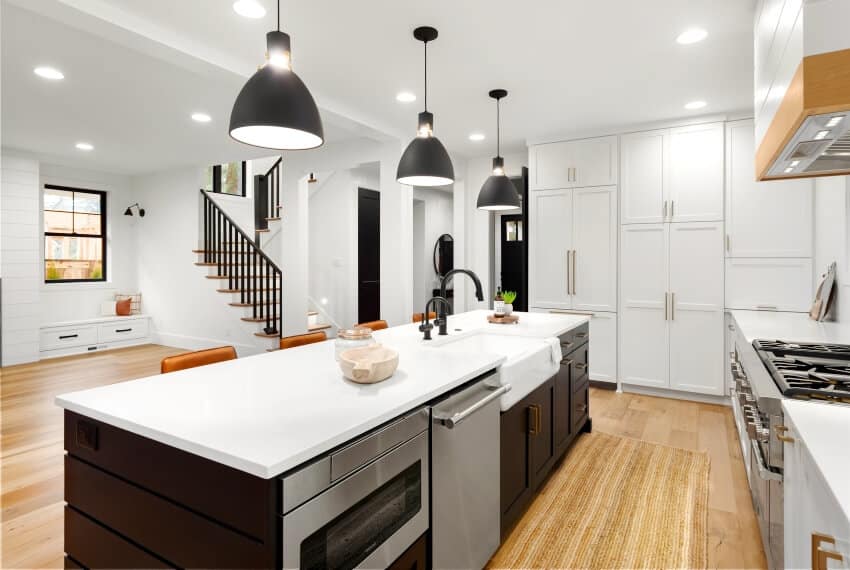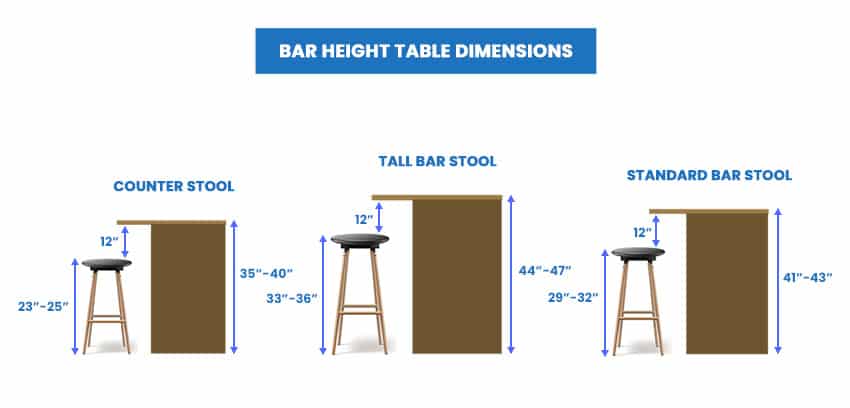Off Center Kitchen Island
See how to position an off center kitchen island including some design tips and ideas about its proper placement, size, and functionality.

If you think of remodeling your kitchen, islands could be a good option. They vary in complexity and price from basic and affordable to complicated and costly.
Kitchen islands do not have to be in the middle of the room. You can place them according to their intended usage.
The dining and cooking islands should be positioned in the center of the kitchen, while islands that need electricity should be near power outlets. If you dream of having enough room in your kitchen to maintain a high-end coffee maker, these islands may help you achieve that goal.
Can A Kitchen Island Be Off Center?

Before constructing a kitchen island, make sure to measure your space and determine the border of the tile where it joins the next room if the kitchen is merged with a living room or extends into another room. See our kitchen island size guidelines here.
Islands should be in the most accessible location inside the kitchen. It all relies on the size of your island and the arrangement of your kitchen. Since you may access the kitchen island from several directions, they are considered an excellent alternative for various culinary duties.
They are also regarded as a critical component of the kitchen since they offer the required appearance and feel of the furnishings. They are great for accommodating party guests or helping youngsters with schoolwork.
Before you build an island in your kitchen, think about what you will use it for. It will aid in the creation of the proper purpose and depth on the island, particularly if you want enough room for the big appliances.
If you have enough room in your kitchen for a large island, setting up many cooking stations is a good idea. Check out our gallery that features large kitchen islands with seating here.
Where Should A Kitchen Island Be Placed?

If your island will be utilized for food cleanup than its location next to the garbage, compactor and dishwasher is useful.
For an island that will be used for in-kitchen dining, entertaining and quest seating its a good idea to position the seating side so their is plenty of room to back up bar stools or chairs.
A standard rule of thumb is to have 42″ to 45″ of space between the kitchen island and cabinets. We propose 48″ between the island and the base cabinets to facilitate traffic movement across the room.
While not all layouts can allow, you can include an island into your design if you have at least 36″ between the base and the island with 48″ being ideal.
Ensure there’s enough room on all sides to allow free flow of traffic around it and between the primary activity zones focused on the stove, sink, and refrigerator.

The amount of room you have on the walk-through side of the island, as well as on the sitting side of the island, are the other two factors to consider when deciding where to put your kitchen island. Additionally, ensure you have adequate space from the side of the island to the walls and windows.
What Direction Should Your Kitchen Island Face?

You may not be able to put exhaust hoods with the smells or against the walls if you add kitchen islands. As a result, you’ll need to vent it upward or downward. To drape the hood over the stove, you must install the high-end stove on the kitchen island.
The smoke is pulled directly up the vent and outside the home. Make sure to vent the steam and smoke upwards as the temperature rises.
You may also turn the island around to face the dining. Visualize yourself standing, looking towards the kitchen.
Use tape to mark where you want everything and the island on the floor. For inspiration, look at several photographs of kitchens and islands online.
Does A Sink Have To Be Centered On An Island?

Sink islands are ideal for kitchens with high ceilings that need a separate washing station from the cooking area.
When you’re short on room, placing your primary sink on the island may help you save space and improve the arrangement and functionality of your kitchen.
We spend most of our time in the kitchen, either preparing food or cleaning up after ourselves. The time we spend in front of the stove is a small percentage of the time we spend in our kitchens.

It’s vital to avoid the urge to center everything when building a kitchen with the primary sink on the island. You don’t want to run into the person cooking at the stove; you want to keep the counter space to one side of the sink as open as possible.
You may replace a U-shaped kitchen with a galley-style kitchen with the main sink on the island if you don’t have enough room for two walls and an island.
The next step is to realize that kitchen islands do not have to be in the center of the room. They should be the kitchen’s focal point but flow with the rest of the room.
Before you decide, double-check the dimensions and size of each kitchen island you’re considering. Designing a kitchen island is a process that requires a great deal of expertise.
Including the right kitchen island ideas in your design may give additional seating, storage, and a focal point for friends and family to congregate around.
Visit our floating kitchen island designs guide for more related content.






